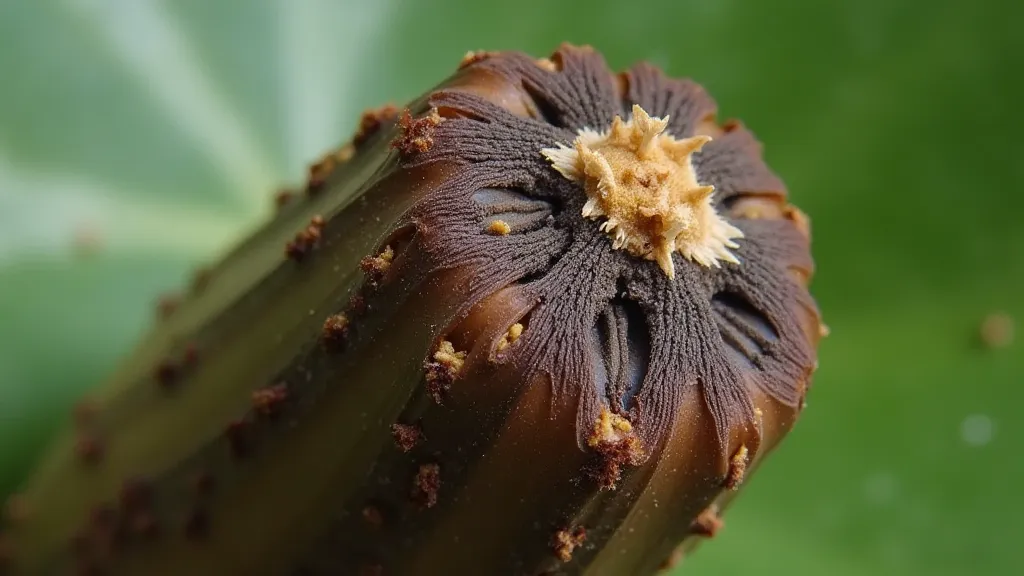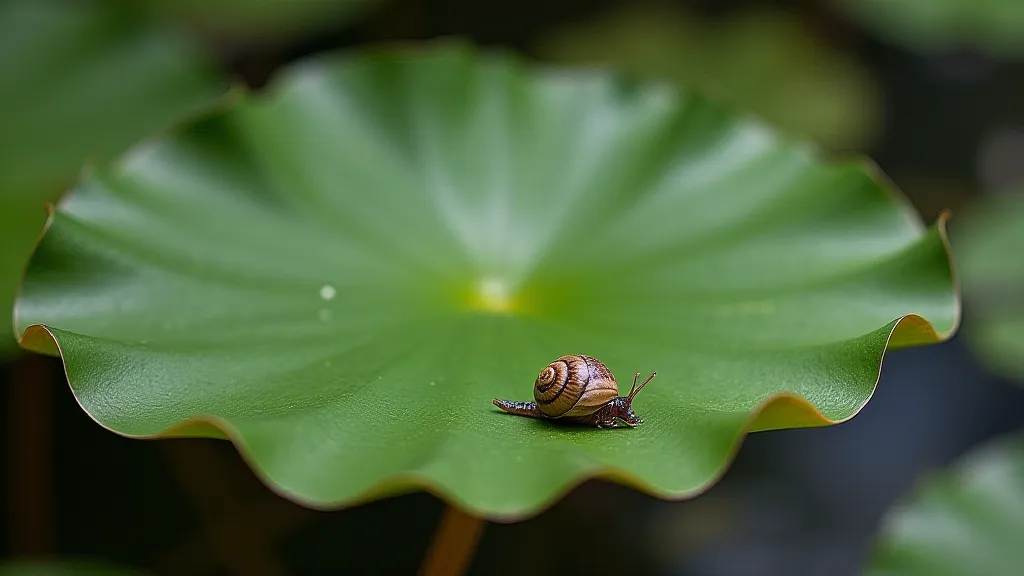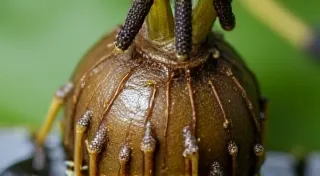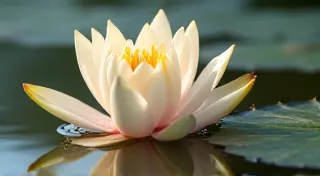Troubleshooting Common Water Lily Problems
Water lilies are stunning additions to ponds and water gardens, transforming them into tranquil havens of beauty. But even experienced pond keepers encounter issues. Don't despair! Most water lily problems are manageable with proper diagnosis and corrective action. This guide will help you identify and resolve common water lily woes, ensuring your plants thrive and provide years of beauty. Before diving into troubleshooting, it's worth considering if you're selecting the right water lily variety for your pond conditions. Factors like sunlight exposure and climate all play a crucial role in a water lily’s success – explore our guide on Choosing the Right Water Lily for Your Pond for more information.
1. Yellowing Leaves: What's Going On?
Yellowing leaves are a frequent concern, and several factors can be the culprit. It's important to identify the pattern of yellowing to pinpoint the cause.
- Uniform Yellowing (Overall Pale Color): This often indicates a nutrient deficiency, particularly nitrogen. Consider adding a slow-release aquatic fertilizer specifically formulated for water lilies. Don't over-fertilize; follow product instructions carefully. A balanced pond ecosystem, however, minimizes the need for artificial fertilizers.
- Yellowing on Lower Leaves First: This can signal poor water quality. Regularly test your pond water and ensure adequate filtration and circulation. Algae blooms can deplete oxygen and contribute to this. Maintaining a healthy pond ecosystem involves more than just addressing immediate issues—it's about understanding the broader interplay of elements.
- Yellowing with Brown Spots: This might suggest a fungal or bacterial infection. Remove affected leaves promptly to prevent spread. Improving water circulation and aeration can help prevent these issues. This kind of situation can be compounded by a lack of design consideration.
- Yellowing Only on Floating Leaves: This can sometimes be caused by herbicide drift from lawn care. Take precautions to shield your pond during herbicide applications.
2. Lack of Blooms: Why Aren't My Water Lilies Flowering?
A water lily without blooms is a frustrating sight. Several factors can inhibit flowering:
- Insufficient Sunlight: Water lilies need at least 6 hours of direct sunlight daily. If your pond is shaded, consider relocating the plant or trimming surrounding vegetation. Careful planning of your pond's location is key to achieving the ideal conditions for water lilies.
- Plant Maturity: Many water lily varieties require a full growing season (or even longer) to bloom. Young plants are often slow to flower. Patience is often rewarded when it comes to water lilies.
- Incorrect Planting Depth: The planting depth is critical. Tropical water lilies should have the tuber just below the surface of the soil, while hardy varieties typically require 12-18 inches. Understanding the specific needs of your water lily is essential.
- Too Much Nitrogen: While nitrogen is essential for leaf growth, an excess can suppress flowering. Adjust your fertilization regimen if needed. A holistic approach to pond care is more effective than focusing on single elements.
- Winter Hardy Varieties: Ensure that if you have winter hardy varieties that the planting depth is appropriate.
3. Tuber Rot: A Serious Concern
Tuber rot is a destructive disease that can quickly kill a water lily. It's often caused by cold, stagnant water and a lack of oxygen. The overall health of your pond, encompassing its design and maintenance, is often directly related to the success of the ecosystem you're trying to cultivate. Often the initial plan for a pond is not given enough consideration, leading to problems later on. Consider how Designing a Water Lily Pond: Creating a Stunning Water Garden can help avoid these issues.
Signs of Tuber Rot:
- Soft, mushy tuber
- Foul odor
- Blackening leaves and stems
Prevention & Treatment:
- Ensure good water circulation and aeration.
- Avoid overcrowding plants.
- Remove dead or decaying plant matter promptly.
- If tuber rot is detected, carefully remove the affected plant and discard it. Disinfect the planting basket before replanting.

4. Algae Overgrowth & Water Clarity
While not directly a water lily problem, excessive algae can impact their health by blocking sunlight and competing for nutrients. Maintaining good water clarity is essential for healthy water lilies. The aesthetic appeal of your pond is often directly tied to its clarity and the health of its inhabitants.
Solutions:
- Mechanical Filtration: Pond filters effectively remove debris and algae.
- UV Sterilizers: These devices kill algae and other microorganisms.
- Barley Straw: Releases natural compounds that inhibit algae growth.
- Aquatic Plants: Other aquatic plants help to compete with algae and improve water quality.
5. Pests and Critters
While water lilies are generally pest-resistant, they can be targeted by certain critters:
- Snails: These can damage leaves and flowers. Manual removal or biological control (introducing beneficial snails that prey on snails) are effective solutions.
- Crayfish: Can sometimes nibble on leaves.
- Herbivorous Fish: If you have fish in your pond, ensure they aren't overgrazing on the water lily foliage.

6. Extending the Beauty: Overwintering and Regional Considerations
In many regions, overwintering water lilies is a necessary step to ensure their survival and continued beauty. Different climates demand different approaches. Knowing your region's specific challenges—from harsh frosts to fluctuating temperatures—is vital. Some hardy varieties thrive in colder climates, while others require more protective measures. Understanding these nuances is key to a successful pond garden. For those in colder climates, Overwintering Water Lilies: A Regional Guide provides valuable information on protecting your water lilies during the winter months.
7. Troubleshooting Specific Scenarios
Beyond the common issues outlined above, certain unique situations may arise. For instance, sudden yellowing across the entire plant might indicate a sudden shift in water chemistry, while leaf spots resembling tiny holes could point to a specific insect infestation. Regular observation is your best defense. Become familiar with the normal appearance and behavior of your water lilies. Any significant deviation from the norm warrants further investigation.
8. Maintaining a Balanced Pond Ecosystem
Ultimately, the key to a thriving water lily garden lies in creating and maintaining a balanced pond ecosystem. This involves more than just addressing individual problems as they arise. It’s about understanding the intricate relationships between plants, fish, and the environment. Consider the ripple effect of every action – a seemingly minor change in one area can have unforeseen consequences in another. Consistent monitoring, proactive maintenance, and a deep appreciation for the natural world are your greatest allies in creating a stunning and enduring water lily garden.
By understanding these common issues and taking proactive steps, you can enjoy a thriving and beautiful water lily garden for years to come!





